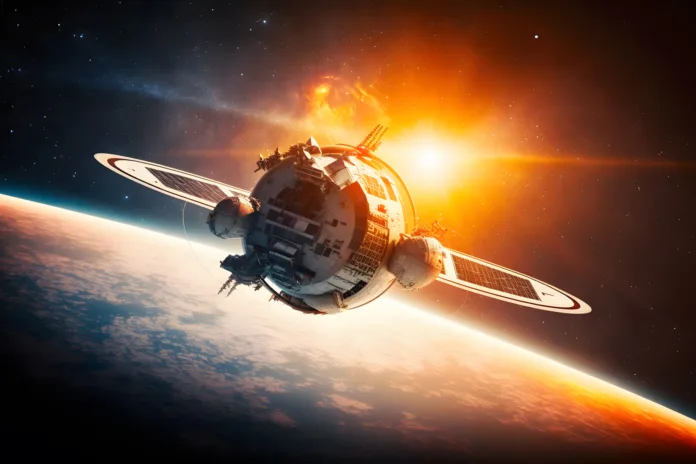Embarking on the extraordinary – NASA’s spacecraft prepares to touch the sun in a daring exploration
NASA readies for an unprecedented mission, poised to rival the historic moon landing of 1969. Within the year, the space agency will initiate a spacecraft expedition targeting a distance of 3.8 million miles into space. At an extraordinary speed of 435,000 mph, the spacecraft will approach the sun’s molten surface, marking a significant leap in scientific exploration.
Central to this ambitious mission is the ‘Parker Solar Probe,’ a pioneering spacecraft designed to land remarkably close to the sun’s surface. Scientist Nour Raouafi underscores the significance of this endeavour, drawing parallels to the iconic moon landing. The probe’s groundbreaking proximity to the sun will be seven times closer than any preceding spacecraft, offering a unique opportunity to collect the first-ever sampling of a star’s atmosphere.
Embed from Getty ImagesNASA plans to achieve a groundbreaking milestone with its upcoming spacecraft expedition, which the world hails as a “monumental achievement for humanity,” comparable to the historic moon landing. Within the year, the Parker Solar Probe, NASA’s probe, will embark on a journey covering an astounding 3.8 million miles into space.
This mission involves a daring encounter with the sun’s molten surface, reaching speeds of 435,000 mph, making it the first-ever spacecraft to land so close to the sun’s surface. This ambitious undertaking aims to obtain the “first-ever sampling of a star’s atmosphere.”
The Parker Solar Probe is not only a trailblazer in its intended mission but also in its proximity to the sun, marking the closest approach by a man-made object to the sun’s surface. Scientist Nour Raouafi emphasized the historical significance of this feat, likening it to the iconic Moon landing of 1969. “We are basically almost landing on a star,” he exclaimed, highlighting the unprecedented proximity of the craft, which will be seven times closer to the sun than any previous spacecraft in human history.
Launched in 2018, the Parker Probe has already garnered success, earning the distinction of being the “first spacecraft to touch the sun.” During its initial mission, the probe collected vital data on the sun’s upper atmosphere and solar wind, setting speed and distance records along the way. The upcoming expedition aims to further enhance our understanding of solar wind through the collection of photographs and measurements.
“As we speed closer and closer to the solar surface, we will learn more about the properties of the Sun itself,” remarked Raouafi in a statement last year. He highlighted the broader implications of the data, emphasizing its potential to significantly improve our understanding of space weather and enhance our ability to live and work in space.
In August 2018, the Applied Physics Laboratory crafted the Parker Solar Probe, a sophisticated piece of technology costing $1.5 billion. Its unique material makeup, designed to withstand the intense heat of the sun, contributes significantly to a substantial portion of the probe’s cost. The key to its resilience lies in a custom heat shield and an autonomous system that shields the mission from the sun’s intense light emissions while allowing the spacecraft to make direct contact with coronal material.
Dr. Nicky Fox, NASA’s head of science, expressed the uncertainty surrounding the mission’s outcomes, stating, “We don’t know” what they’ll find. However, she anticipates discovering various types of waves in the solar wind associated with heating, pointing to a mix of processes that scientists have debated for years. The Parker Solar Probe, with its cutting-edge technology and daring mission, stands as a testament to human ingenuity and the relentless pursuit of knowledge in the realm of space exploration.
